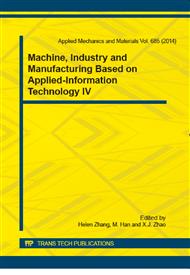[1]
Guozheng WU, Zongxue XU, Transport Processes of Low-level Radioactive Liquid Effluent of Nuclear Power Station in Closed Water Body[J]. Environment Science, 2012, 33(7): 2438-2443. (In Chinese).
Google Scholar
[2]
Vilvea M, Hirvonen. A, Sillanpaa m. the Effects of reaction the conditions on nuclear laundry water treatment in Fenton process [J]. Journal of Hazardous Materials, 2009, 164 (2-3): 1468-1473.
DOI: 10.1016/j.jhazmat.2008.09.058
Google Scholar
[3]
Toshiaki Matsuo, Takashi Nishi, Activated carbon filter treatment of laundry waste water in nuclear power the plants and the filter recovery by heating in vacuum [J]. Carbon, 2000, 42 (5): 709-714. Gilbert.
DOI: 10.1016/s0008-6223(99)00158-x
Google Scholar
[4]
Guichun YUN, E Gilbert, Treated with H2O2 / Fe2 + containing anthraquinone - 2 - sulfonic acid (ASA) dye wastewater experimental study [J]. Water treatment technology, 1987, 13 (4): 193-199. (In Chinese).
Google Scholar
[5]
Qicang WANG, Youzhi LIU, Xue BAI, Hongyan SHEN, Technical progress of organic wastewater treatment by Fenton reagent [J]. Journal of chemical intermediates, 2009, 12. 25 to 28.
Google Scholar
[6]
Changyuan TAO, Yun XIANG, Renlong LIU, Comparison experiment of landfill leachate by using microwave and microwave-Fenton reagent[J], Journal of Liaoning university of petroleum and chemical, 2006, 26 (4) : 18 to 20.
Google Scholar
[7]
Neyens E, Baeyens J. A review of classic Fenton's peroxidation as an advanced oxidation technique [J]. Journal of Hazardous Materials, 2003, 98 (1-3) : 33-50.
DOI: 10.1016/s0304-3894(02)00282-0
Google Scholar
[8]
Xu X, Li H, Wang W, et al. The Degradation of dyes solutions by the Fenton process [J]. Chemosphere, 2004, 57 (7): 595-600.
DOI: 10.1016/j.chemosphere.2004.07.030
Google Scholar
[9]
Jianhui SUN, Shengpeng SUN, Huiliang WANG, et al. Progress of research on Fenton oxidation technology in the treatment of industrial wastewater containing refractory organic matter [J]. Industrial water treatment, 2006, 26 (12): 9-13. (In Chinese).
Google Scholar
[10]
Huseyin T, Okan, B Selale S et al. The Use of Fenton Oxidation to Improve the Biodegradability of a Pharmaceutical Wastewater. The Journal of Hazardous Materials, 2006, 136 (2) : 258 ~ 265.
Google Scholar
[11]
Yang RUAN, Youliang ZOU, Zhuoxian SHEN, etc. Cyanide removal from electroplating wastewater by Fenton [J]. Water treatment technology, 2012, 38 (1): 114-117. (In Chinese).
Google Scholar
[12]
Kwon B G, Lee D S, Kang N, et al. The Characteristics of P - Chlorophenol Oxidation by Fenton 'S Reagent [J]. Water Research, 1999, 33 (9): 2110-2118.
DOI: 10.1016/s0043-1354(98)00428-x
Google Scholar
[13]
Meric S Kaptan D O, lmez t. Color and COD removal from wastewater containing reactive black 5 using Fenton oxidation process [J]. J Chemospere, 2004, 2004 (3): 435-441.
DOI: 10.1016/j.chemosphere.2003.08.010
Google Scholar
[14]
Qian ZHANG, Yufeng ZHANG, Zhitao LI, Fenton reagent oxidation pretreatment of LDPE - g - MAH wastewater [J]. Journal of Nanjing university of technology (natural science edition), 2012 (1): 113-116.
Google Scholar


